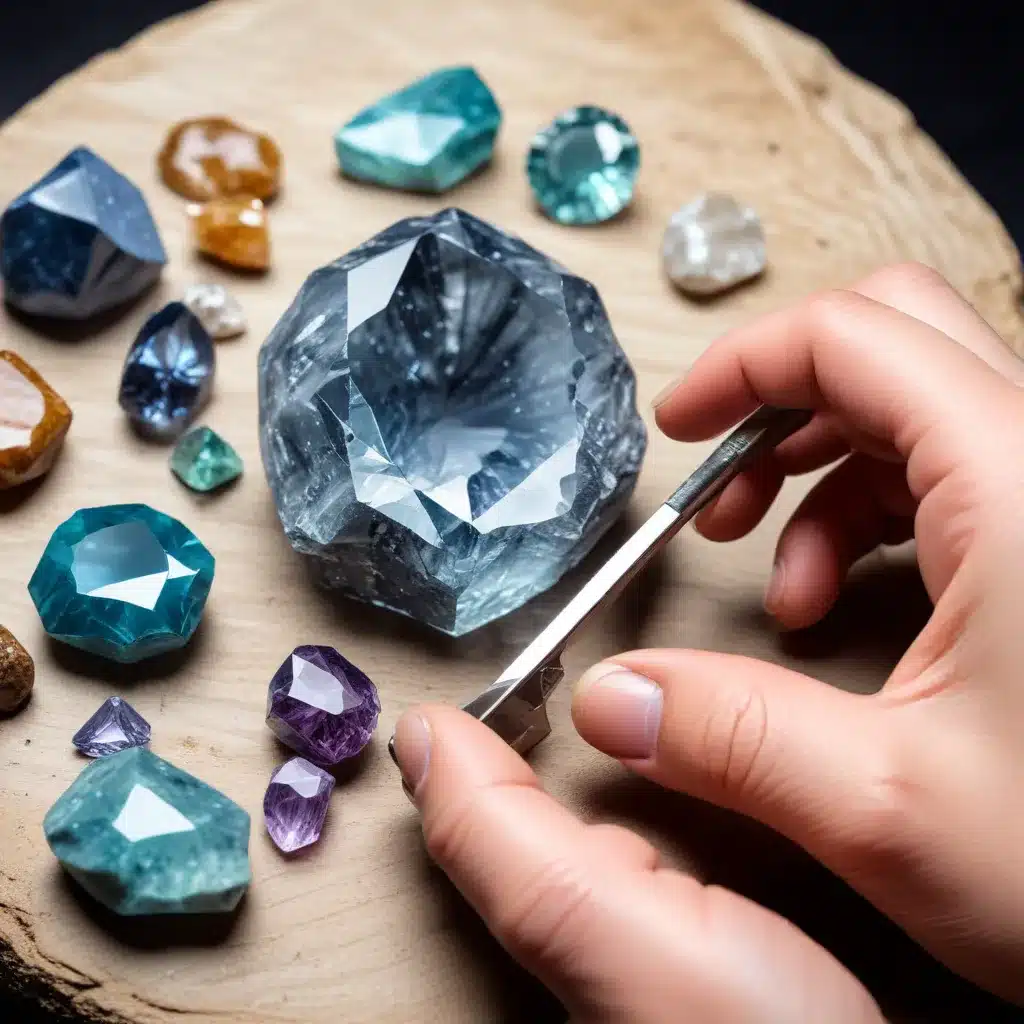
The craft of gem cutting is an age-old art form that transforms nature’s raw materials into dazzling works of beauty. As a gem expert at Shelby Gem Factory, I’ve had the privilege of witnessing firsthand the meticulous process of shaping these natural wonders, revealing their hidden brilliance and fire.
The journey of a gemstone, from its humble beginnings deep within the Earth’s crust to its final polished form, is a testament to the ingenuity and skill of the gem cutter. Each step in this transformative process requires a deep understanding of the gemstone’s unique properties, and a steadfast commitment to precision and artistry.
Let’s delve into the intricacies of this captivating craft, exploring the science, history, and techniques that bring out the very best in these natural gemstones.
The Science of Gemstones
At the heart of gem cutting lies a deep appreciation for the mineralogical and crystalline properties of these natural treasures. Each gemstone, whether it’s a diamond, a ruby, or an emerald, is a unique product of the Earth’s geological processes, with its own distinct atomic structure and chemical composition.
These fundamental characteristics, such as Mohs hardness, refractive index, and dispersion, play a crucial role in determining how a gemstone will respond to the cutting and polishing techniques employed by the skilled gem cutter. Understanding these scientific principles is essential in unlocking the full potential of a gemstone’s beauty.
The History of Gem Cutting
The art of gem cutting has a rich and storied past, tracing its origins back to ancient civilizations. The earliest known diamond cutting techniques were rudimentary, focusing primarily on cleaving and splitting the rough crystals along their natural planes of weakness. Over time, as the craft evolved, we witnessed the emergence of more sophisticated cutting styles, such as the point cut and the table cut.
Landmark innovations, like the invention of the bruting machine in the 1870s and the development of the modern round brilliant cut by Marcel Tolkowsky in 1919, have significantly shaped the industry, ushering in a new era of precision and brilliance. Renowned figures, such as Henry Grossbard and the Royal Asscher Diamond Company, have also left an indelible mark on the evolution of gem cutting, introducing cutting styles that continue to captivate the world.
The Art of Gem Cutting
At the heart of gem cutting lies a delicate balance between science and artistry. The skilled gem cutter must meticulously plan and execute each facet, ensuring that the final product not only showcases the gemstone’s natural beauty but also maximizes its brilliance and fire.
The process begins with a thorough examination of the rough gemstone, where the cutter maps out the crystal structure and identifies the best approach to maximize the gemstone’s potential. This critical planning phase dictates the final shape, yield, and optical performance of the finished gem.
Once the plan is in place, the cutter employs a range of specialized tools, from diamond saws to polishing wheels, to transform the rough stone into a precisely faceted masterpiece. Each facet must be cut and polished to exacting standards, as the interplay of these flat surfaces is what ultimately determines the gemstone’s ability to capture and reflect light.
The result is a symphony of light, where the gemstone’s brilliance, fire, and scintillation come together to create a truly captivating visual experience. Whether it’s the classic round brilliant cut, the elegant emerald cut, or the bold and distinctive radiant cut, the gem cutter’s artistry is on full display.
The Gemstone Cutter’s Toolkit
The art of gem cutting is not just about the cutter’s vision and expertise; it also relies on a specialized set of tools and equipment. From the precise diamond saws used for cleaving and shaping the rough stones to the high-speed polishing laps that bring out the gemstones’ final shine, every element of the cutter’s toolkit plays a crucial role in the transformation.
The mastery of these tools, combined with the cutter’s intimate knowledge of the gemstone’s properties, is what allows for the creation of truly remarkable pieces. It’s a delicate dance, where the cutter’s steady hand and unwavering focus are just as important as the advanced technology at their disposal.
The Beauty of Natural Stones
Ultimately, the art of gem cutting is a celebration of nature’s finest creations. Whether it’s the unparalleled brilliance of a expertly cut diamond, the captivating hues of a colored gemstone, or the mesmerizing allure of a rare and exotic variation, these natural wonders possess an inherent beauty that can be further enhanced by the skilled gem cutter.
By understanding the geological processes that give rise to these gemstones, and by respecting the unique characteristics and imperfections that make each one truly one-of-a-kind, the gem cutter is able to unleash the full potential of these natural treasures. The result is a dazzling array of gemstones that not only captivate the eye but also tell the story of the Earth’s extraordinary history.
As we continue to push the boundaries of gem cutting, embracing new technologies and innovative techniques, one thing remains constant: the enduring allure of natural gemstones. Their timeless beauty, enhanced by the meticulous efforts of skilled craftsmen, will continue to inspire and enchant jewelry enthusiasts, designers, and collectors alike.
At Shelby Gem Factory, we take great pride in our commitment to the art of gem cutting, and we invite you to explore our exceptional collection of natural gemstones, each one a unique masterpiece crafted with the utmost care and attention to detail. Discover the beauty that lies within, and let these gemstones captivate your senses and ignite your imagination.

